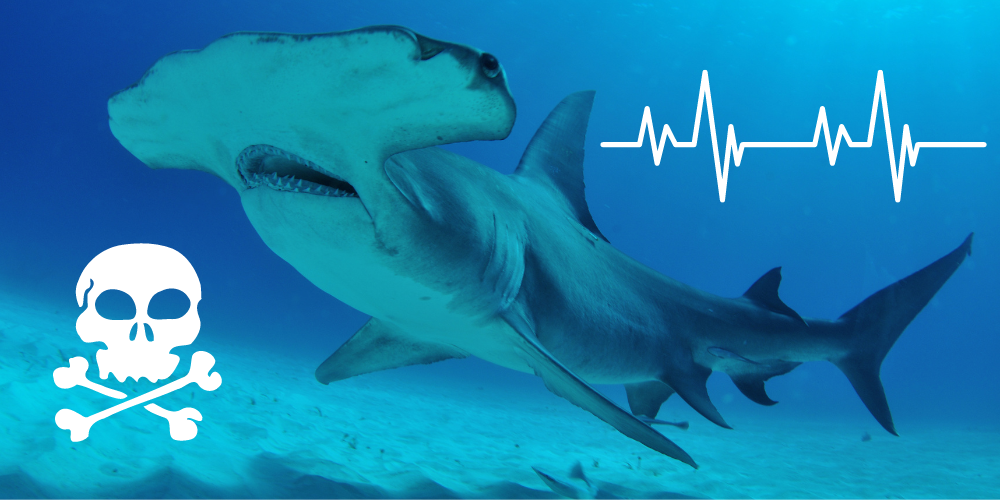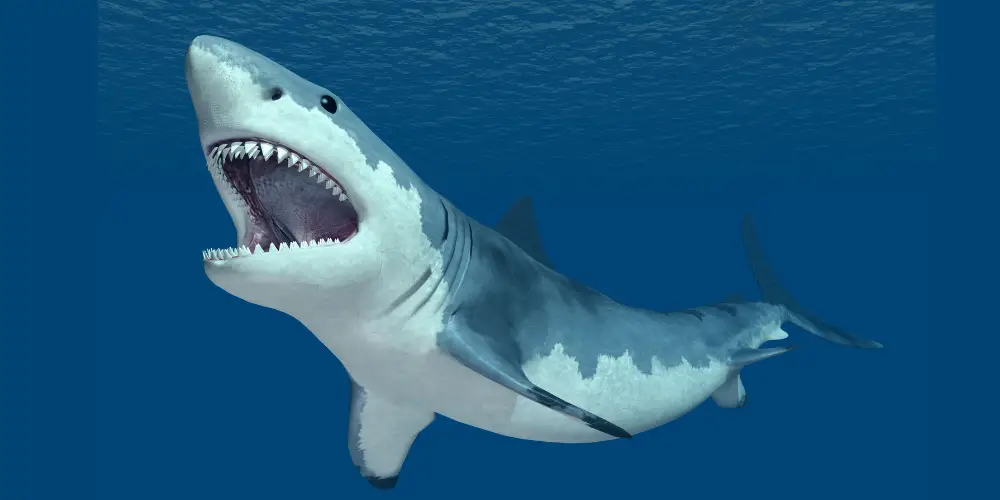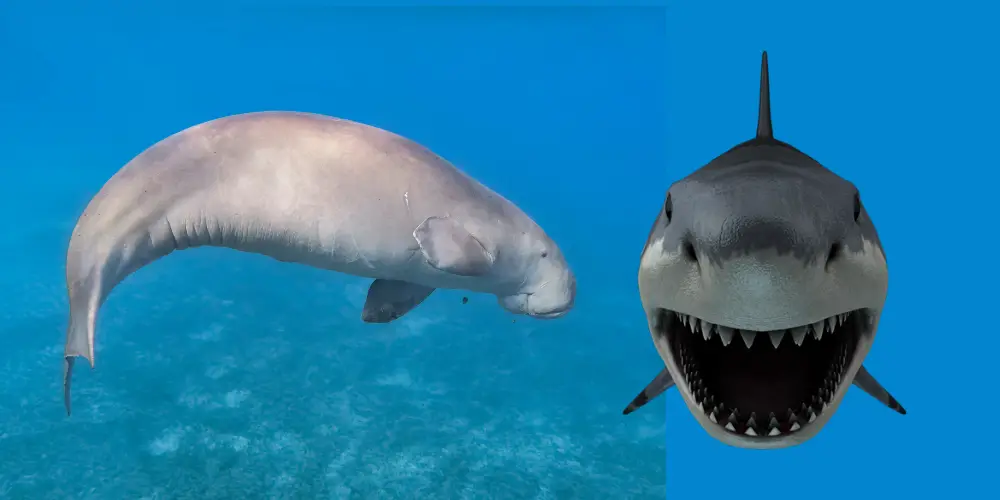The vast and mysterious ocean is home to many creatures, with the hammerhead shark being one of its most iconic inhabitants.
As humans venture into the deep blue, a common query arises: are hammerhead sharks dangerous to humans?
Hammerhead sharks, known for their unique head shape, are typically not aggressive to humans. Only 18 nonfatal hammerhead attacks have been recorded in human-ocean interactions. Their behavior is often driven by curiosity rather than aggression. However, caution and respect are advised during encounters.
This article addresses this question, aiming to understand the true nature of these fascinating creatures.
Key Takeaways
- Hammerhead sharks are typically driven by curiosity rather than aggression towards humans.
- There have been 18 nonfatal hammerhead attacks on humans, with none being fatal.
- The unique head shape of hammerheads aids in hunting navigation and provides a nearly 360-degree view.
- Their wide field of vision and electroreceptive capabilities make hammerhead sharks excellent hunters.
- Among hammerhead species, the great hammerhead might be perceived as more threatening due to its size, but aggressive behavior towards humans is rare.
- Divers usually experience peaceful encounters with hammerhead sharks, emphasizing their general inquisitiveness.
- Environmental factors like water temperature and human activity can influence a hammerhead shark’s behavior.
- Bull sharks, not hammerheads, are among the most dangerous sharks, with 93 unprovoked attacks between 2017 and 2022.
- Media has often misrepresented sharks, amplifying fear through movies like “Jaws.”
- Sharks do not prefer the taste of humans, and most attacks are due to mistaken identity.
- National Geographic’s research suggests that hammerhead sharks are not inherently dangerous to humans.
- Renowned marine biologist Dr. Sylvia Earle emphasizes sharks’ role in indicating a healthy ocean.
- Understanding and respecting hammerhead behavior is crucial for coexistence and conservation in marine ecosystems.
Overview of Hammerhead Shark
There’s a diverse range of hammerhead shark species, with most being relatively small and not considered a threat to humans.
However, the great hammerhead stands out due to its size and potential fierceness. But is it truly more dangerous? Let’s find out.
Behavior and Aggressiveness
Hammerhead sharks, like many of their marine counterparts, are often misunderstood.
Their unique head shape, which aids in hunting and navigation, has made them a subject of fascination and fear.
Marine experts and researchers have consistently observed that these creatures are more driven by curiosity than aggression.
Innate Curiosity
The ocean is a vast and complex ecosystem; for hammerhead sharks, it’s a world of mysteries waiting to be explored.
Their elongated heads, equipped with eyes on either side, give them a nearly 360-degree view, allowing them to be keen observers.
This wide field of vision, combined with their electroreceptive capabilities, makes them excellent hunters.
However, it’s often out of curiosity rather than predatory intent when they approach divers or swimmers.
Species-Specific Behaviors
While the hammerhead family consists of several species, not all exhibit the same behaviors.
For instance, the bonnethead, a smaller member of the hammerhead family, is known to be relatively docile.
In contrast, the great hammerhead might be perceived as more threatening due to its size and predatory nature.
However, even among the larger species, aggressive behavior towards humans is rare.
Interactions with Divers
Many divers have recounted peaceful encounters with hammerhead sharks.
These sharks often circle divers, maintaining a safe distance and displaying their inquisitiveness.
There have been instances where hammerheads approach divers closely, but these encounters are typically brief and non-aggressive.
Divers are advised to remain calm and avoid rapid movements, as sudden actions can startle the shark.
The Role of Environment
A shark’s behavior can also be influenced by its environment. Factors like water temperature, prey availability, and human activity can impact how a hammerhead shark reacts.
Sharks might be more accustomed to human presence in areas with frequent human activity and less likely to display aggressive behaviors.
For a deeper dive into the behaviors of different shark species and their interactions with humans, Do Sharks Like Being Pet? offers insightful perspectives.
Rare Incidents of Attacks
Despite their intimidating appearance, Hammerhead sharks have a relatively low record of attacks on humans.
Their unique head shape gives them a 360-degree view, allowing them to navigate their surroundings better and avoid potential threats.
However, like any wild animal, they can be unpredictable, and there have been instances where they have shown aggression towards humans.
According to the International Shark Attack File (ISAF), there have been 18 nonfatal hammerhead attacks on humans in all the time humans have spent swimming in the world’s oceans.
Hammerhead sharks are the sixth most dangerous shark due to only 18 human attacks – none of which were fatal.
Most of these incidents are believed to be cases of mistaken identity, where the shark confuses a human for its usual prey.
The murky waters near beaches or river mouths can make it difficult for them to differentiate, leading to accidental attacks.
It’s worth noting that bull sharks are among the most dangerous sharks. They have aggressive behavior and prefer shallow waters; hammerhead sharks do not share the same reputation.
For instance, between 2017 and 2022, the ISAF reported that bull sharks were involved in 119 incidents, with 93 being unprovoked attacks and 26 being fatal.
However, it’s essential to approach the topic with a balanced perspective.
Recognizing the reasons behind their behavior and understanding the context of their interactions with humans can provide a more nuanced view of these magnificent marine animals.
Encounters with Divers and Experts
With its vast expanse and mysterious depths, the ocean is home to many creatures, each playing a unique role in the marine ecosystem.
Among these, hammerhead sharks stand out, not just for their distinctive appearance but also for their interactions with humans.
Many marine enthusiasts, divers, and researchers have ventured into the waters and come face-to-face with these magnificent creatures, often leaving with tales of peaceful encounters.
Divers often recount their experiences with hammerhead sharks as serene and awe-inspiring.
With their wide-set eyes, these sharks have a panoramic view, allowing them to navigate their surroundings precisely.
Combined with their natural curiosity, this unique feature often leads them to approach divers, not with aggression, but with an intent to explore.
Such encounters emphasize the shark’s role in marine ecosystems and highlight their general lack of aggression towards humans.
Real-life Encounter With a Hammerhead Shark Video
One might wonder, why the interest in humans? The answer lies in the shark’s inquisitive nature.
Hammerhead sharks are known to explore their environment, often investigating unfamiliar objects or creatures.
While most interactions between hammerhead sharks and humans are peaceful, it’s essential to remember that they are wild animals.
As with any wildlife encounter, it’s crucial to approach with caution, respect their space, and avoid any actions that might be perceived as threats.
By understanding and respecting their behavior, we can coexist harmoniously with these incredible marine creatures and continue to marvel at their beauty and significance in our oceans.
Misconceptions and Reality
Like many of their kin, Hammerhead sharks have been victims of media misrepresentation.
Their portrayal in movies and news stories often paints them as relentless human hunters, a far cry from their actual behavior. Let’s debunk some myths:
Media’s Role in Shaping Perceptions
Movies like “Jaws” and sensational news stories have amplified the fear of sharks, often portraying them as insatiable human predators.
Such dramatizations, while entertaining, distort the reality, turning sharks into terrifying sea monsters.
For instance, the scene in “Jaws” where a great white shark hunts swimmers, leaves many minds with an indelible, menacing image of sharks.
The Taste Misconception
A common question arises: Do sharks like the taste of humans? The answer is no. Sharks do not prefer the taste of humans.
Their diet mainly consists of high-fat marine mammals like seals and sea lions. Humans, with our low-fat and high-bone content, don’t fit their dietary preferences.
Most shark attacks on humans are due to mistaken identity or defensive reasons.
Dive deeper into this topic and discover why sharks attack and the reality of humans in a shark’s food chain HERE.
Sharks’ Taste Perception
Sharks perceive taste differently from humans. They have taste buds, but their primary sense in hunting is smell, not taste.
Thus, discussing a shark’s preference for human meat is somewhat complicated, as their taste perception differs vastly from ours.
Curious about the anatomy of sharks? Learn if Sharks Have Tongues.
The Reality
Despite occasional and mostly unintentional encounters between sharks and humans, we do not constitute a favored food item on the sharks’ menu.
The stereotype of sharks being relentless human hunters is largely a product of Hollywood exaggeration and sensational media stories.
Research indicates that while sharks can and do bite humans, it’s more an exception than the rule, and humans are not preferred prey for sharks.
Sharks, including hammerheads, are magnificent and powerful creatures.
They are not the man-eating monsters often depicted in media. It’s crucial to differentiate between myths and reality to foster understanding and respect for these marine beings.
Expert Statements and Sources
The world of marine biology and research is vast, with numerous experts and organizations dedicated to understanding and preserving oceanic life.
Among these, hammerhead sharks have been a subject of interest, given their unique appearance and behavior.
Let’s delve into what some of the leading voices in marine research have to say:
National Geographic’s Take
National Geographic, a globally recognized institution known for its commitment to exploring and protecting our planet, has extensively studied and documented various shark species.
Their research on hammerhead sharks aligns with the broader consensus: Hammerhead sharks are not inherently dangerous to humans.
While they are apex predators in their ecosystem, their interactions with humans are mostly non-aggressive.
National Geographic’s extensive archives and documentaries provide a wealth of information, shedding light on the true nature of these magnificent creatures.
Other Expert Opinions
Besides National Geographic, an American marine biologist, oceanographer, explorer, author, and lecturer has shared her experiences and findings on hammerhead sharks.
Her studies often emphasize the sharks’ curiosity rather than aggression.
“Sharks are beautiful animals, and if you’re lucky enough to see lots of them, that means that you’re in a healthy ocean.”
Dr. Sylvia Earle, a renowned marine biologist
This sentiment underscores the importance of sharks, including hammerheads, in maintaining the balance of marine ecosystems.
Diving Deeper into Shark Facts
Sharks, in general, have always been a subject of fascination and curiosity. There are numerous myths, stories, and misconceptions surrounding them.
For those eager to learn more about these incredible creatures, a great starting point is understanding their social behaviors.
Have you ever wondered about their group dynamics?
Find out What Do You Call a Group of Sharks? and dive deeper into the intriguing world of sharks.
The media and popular culture might sometimes paint a fearsome picture of hammerhead sharks, but expert opinions and scientific research tell a different story.
It’s essential to rely on credible sources and expert statements to form a well-rounded understanding of these marine creatures.
Final Thoughts
The question, “Are hammerhead sharks dangerous?” has intrigued many, leading to many perceptions shaped by media portrayals, sensational stories, and genuine curiosity.
As we’ve journeyed through the depths of understanding these unique marine creatures, it becomes evident that the ocean’s vast realm tells a different story than popular narratives.
With their distinctive appearance, Hammerhead sharks have often been at the forefront of marine misconceptions.
However, research, expert opinions, and firsthand accounts consistently highlight that these creatures are more about curiosity than aggression.
Their role in the marine ecosystem is pivotal, and their presence is a testament to a healthy, thriving ocean.
As we continue to explore the mysteries of the deep, it’s crucial to approach topics like “Are hammerhead sharks dangerous?” with an open mind, relying on credible sources and firsthand experiences.
Doing so fosters a greater understanding and appreciation for these magnificent beings, emphasizing the importance of coexistence, respect, and conservation.
In the vast tapestry of marine life, hammerhead sharks serve as a reminder that understanding and knowledge can dispel fears and misconceptions, leading to a harmonious relationship between humans and the wonders of the ocean.
CHECK OUT MORE SHARK TOPICS BELOW:
REFERENCES:
- Hammerhead shark. (2023, August 16). In Wikipedia. https://en.wikipedia.org/wiki/Hammerhead_shark
- The National. (2023, July 30). Hundreds of hammerhead sharks surround diver in amazing video. Retrieved from https://www.thenationalnews.com/world/asia/2023/07/30/hundreds-of-hammerhead-sharks-surround-diver-in-incredible-footage/
- Liveaboard.com. (n.d.). The Best Places To Dive With Hammerhead Sharks. Retrieved from https://www.liveaboard.com/diving/marine-life/diving-with-hammerhead-sharks
- NBC San Diego. (2015, August 13). Hammerhead Shark Bites Diver Off San Diego Coast in Rare Attack. Retrieved from https://www.nbcsandiego.com/news/local/san-diego-shark-attack-diver-coast-guard/110994/
- Dive Worldwide. (n.d.). Diving with Hammerheads. Retrieved from https://www.diveworldwide.com/discover/interests/hammerhead-sharks
- Dive Worldwide. (n.d.). Great Hammerhead Encounters Bahamas Diving Holiday. Retrieved from https://www.diveworldwide.com/trip-ideas/great-hammerhead-encounters




